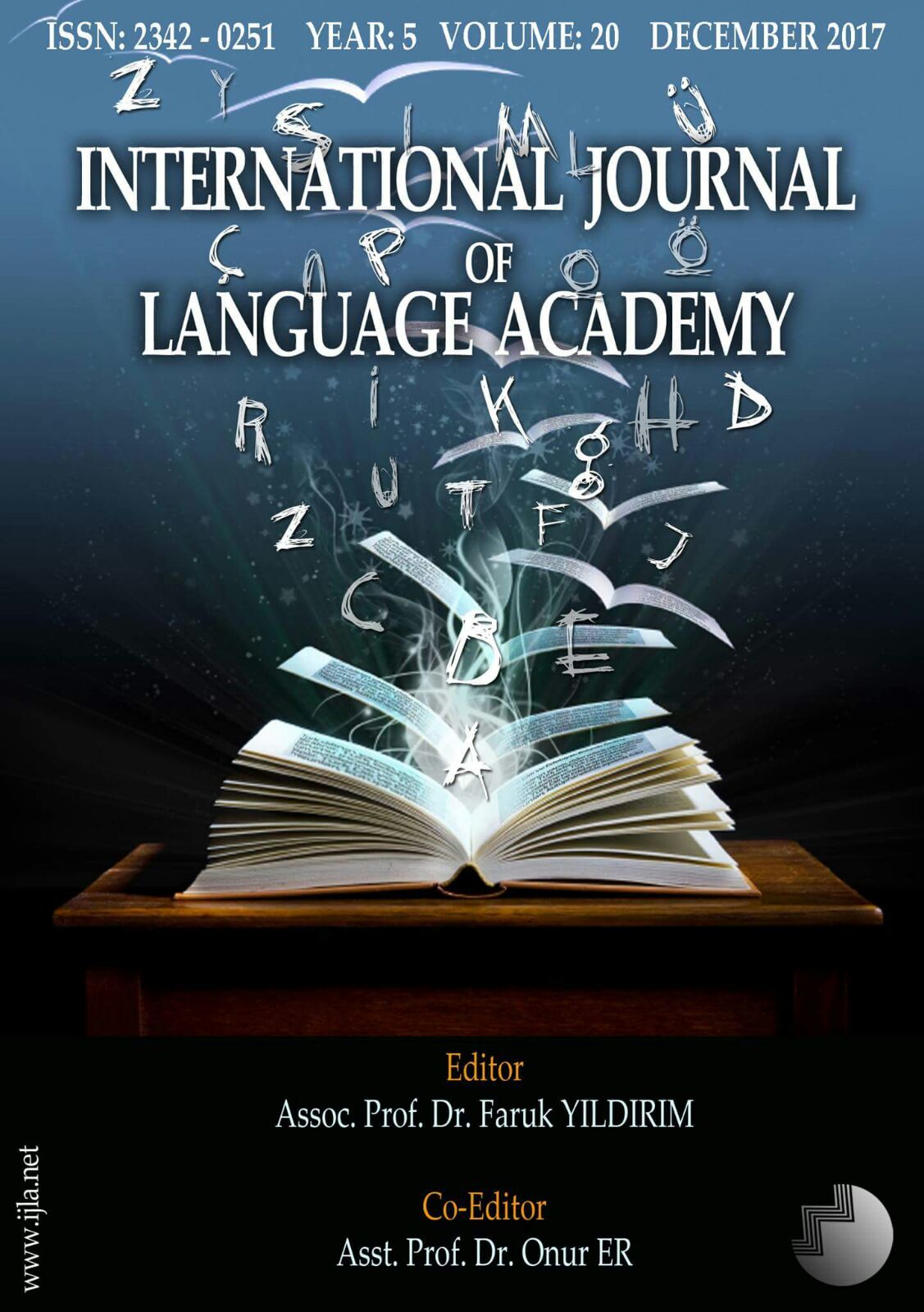Author :
Abstract
Teknolojinin gelişmesi ile insanoğlu pek çok değişim yaşamıştır. Bu açıdan, dijital vatandaşlara eğitim verilirken teknolojik bir araç kullanılması önemlidir (Ribble ve ark. 2004; Collins ve Halverson, 2009). Bu eylem araştırmasının amacı farklı ve özgün bağlamlarda geçen YouTube videolarını altyazılı bir şekilde kullanan bir internet sayfasından sesletim çalışmanın etkilerini araştırmaktır. Vakadaki öğrencilerin ilk dönemki derslerinde sesletim becerisi gelişiminde problem olması ve sadece ders kitapları ile çalışma olanakları olduğu için bu çalışma yapılmıştır. Bu özgün internet sitesi kullanılmadan önce, öğrencilere Elliott (1995) tarafından geliştirilen Sesletim Tutum Envanterinin adapte edilmiş hali uygulanmıştur. Böylelikle sesletim becerisi ile ilgili tutumları anlaşılmıştır. Envanterin sonucunda öğrencilerin sesletim dersindeki problemleri aşmak istediği sonucu çıkınca ve daha çok materyale ihtiyaç duydukları tespit edilince internet sitesi kullanılmaya başlanmıştır. Görüşlerini almak için çalışmanın sonucunda açık uçlu sorular sorulmuştur. Elde edilen içerik analizi sonuçlarına göre özgün Web 2.0 aracı kullanımı öğrencilerin sesletim becerisi gelişimine katkıda bulunmuştur.
Keywords
Abstract
The cradle of humankind has welcomed many changes with the advancement of technology. On this aspect, it is of high importance to use something technological if you are teaching to digital citizens (Ribble et al. 2004; Collins and Halverson, 2009 among others). Therefore, the aim of the present action research is to see the effects of a website (see the References) which uses various YouTube videos with subtitles to see different pronunciations in different authentic contexts. Since the students had problems about pronunciation skill and they were able to practice it with solely coursebook, they had many problems at the first term. At the beginning of the second term prior to the website use, Pronunciation Attitude Inventory (PAI) (Elliott, 1995) was adapted, and it was applied to the students so as to grasp their attitudes toward the pronunciation skill. After the results highlighted that the students mostly had positive attitudes toward the pronunciation skill development and they needed more tools to overcome problems, the website was included in the syllabus. To find out their views, open ended questions were asked to the students. The results of the content analysis highlight that the use of an authentic Web 2.0 tool contributed a lot to the development of their pronunciation skills.





